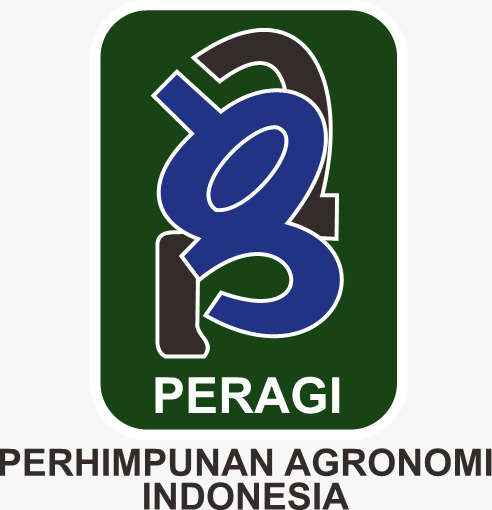The Effect of Tomato LOF and Planting Media on Cherry Tomato Production (Solanum lycopersicum var. cerasiforme) DFT Aquaponic System
Abstract
Shallots are a high-value commodity due to their nutritional content and benefits for heart health, cancer prevention, and immune system support. This study aims to determine the effects of the interaction between Tomato LOF and planting media on the growth and production of cherry tomatoes. The research was conducted at Dokagu UIR Housing Block D No. 2, Air Dingin Village, Bukit Raya District, Pekanbaru City, over four months, from August to November 2024. The design employed in this study was a Factorial Completely Randomized Design. The Tomato LOF consisted of four treatment levels: 0, 5, 10, and 15 ml per 15 liters of water. The planting media (M) also consisted of four treatment levels: Rockwool, raw rice husks, cocopeat, and rice husk charcoal. The parameters observed included flowering age, the number of fruits per plant, fruit weight per individual fruit, and total fruit weight per plant. The results indicated that the interaction between Tomato LOF and planting media significantly affected the fruit weight per planting, specifically with 5 ml of water per 15 liters and rice husk charcoal, resulting in an average weight of 95.25 grams. For the primary treatment involving Tomato LOF, a significant effect was observed on the fruit weight per planting, particularly with 15 ml of water per 15 liters, yielding a weight of 66.94 grams. Additionally, the primary treatment of planting media significantly influenced the number of fruits per plant, with cocopeat yielding an average of 7.63 fruits, and the weight of fruit per planting with the rice husk charcoal treatment also measuring 66.94 grams.
Downloads
References
Badan Pusat Statistik Indonesia. (2023). Hasil pencacahan lengkap Sensus Pertanian 2023. Sensus Pertanian, 28.
Ginanjar, M., Rahayu, A., & Tobing, O. L. (2021). Pertumbuhan dan produksi tanaman kailan (Brassica oleracea var. alboglabra) pada berbagai media tanam dan konsentrasi nutrisi AB mix dengan sistem hidroponik. Jurnal Agronida, 7(2), 86.
Hidayat, R., Saragih, S. H. Y., Adam, D. H., & Triyanto, Y. (2024). Optimizing tomato Bareto (Lycopersicum esculentum Mill) varieties growth and production using gamma ray radiation technology. Jurnal Agronomi Tanaman Tropika (Juatika), 6(2). https://doi.org/10.36378/juatika.v6i2.3639
Kementerian Pertanian. (2024). Angka tetap hortikultura tahun 2023. Kementan.
Mas’ud, H., & Widhiant, L. (2021). Pertumbuhan dan hasil tanaman tomat (Lycopersicum esculentum Mill) pada media substrat hidroponik dengan konsentrasi nutrisi AB mix yang berbeda. Agrotekbis, 9(2), 495–503.
Nur Alfiah, L., Siregar, K. A., & Novianto, E. (2023). Increasing the growth and yield of tomato plants (Lycopersicum esculentum Mill) by applying palm oil compost. Jurnal Agronomi Tanaman Tropika (Juatika), 5(2), 330–338. https://doi.org/10.36378/juatika.v5i2.3062
Nur, M. (2016). Aplikasi kepekatan larutan nutrisi dan persentase media campuran cocopeat-bokashi pada pertumbuhan dan produksi butter head lettuce (Lactuca sativa var. capitata L.) secara hidroponik. Dinamika Pertanian, 194–202.
Nur, M., & Agara, O. (2024). Pengaruh ketinggian talang dan media tanam secara hidroponik vertikultur terhadap pertumbuhan selada Chris Green (Lactuca sativa L.). Dinamika Pertanian, 2024, 209–218.
Prasetya, M. E. (2014). Pengaruh pupuk NPK mutiara dan pupuk kandang sapi terhadap pertumbuhan dan hasil tanaman cabai merah keriting varietas Arimbi (Capsicum annuum L.). Agrifor, 13(M), 191–198. http://ejurnal.untag-smd.ac.id/index.php/AG/article/view/862
Rachmawati, E. P., Titania, V., & Chempro, S. (2023). Pemanfaatan kulit nanas dan kulit pisang sebagai pupuk organik cair. Chempro, 2(1), 53–58. https://doi.org/10.33005/chempro.v2i01.92
Rakocy, J. E., Masser, M. P., & Losordo, T. M. (2006). Recirculating aquaculture tank production systems: Aquaponics - integrating fish and plant culture (SRAC Publication No. 454). Southern Regional Aquaculture Center.
Safitri, E. L. (2020). Aplikasi PGPR (Plant Growth Promoting Rhizobacteria) dan Gandasil B dalam meningkatkan pertumbuhan dan produksi tanaman cabai rawit (Capsicum frutescens L.).
Sahin, K., Orhan, C., Akdemir, F., Tuzcu, M., Sahin, N., & Yilmaz, I. (2022). Tomato lycopene in the prevention of cardiovascular diseases: Mechanisms and clinical evidence. Critical Reviews in Food Science and Nutrition, 62(15), 4223–4235.
Suryani, Y. R., Sudarma, A. D., & Sumarsono. (2020). Growth and production of tomatoes (Lycopersicum esculentum) as affected by various types of organic fertilizer and rice husk mulch dosage. NICHE Journal of Tropical Biology, 3(1), 18–25. https://ejournal2.undip.ac.id/index.php/niche
Yudiawati, E., & Kurniawati, E. (2019). Pengaruh berbagai macam mikroorganisme lokal (MoL) terhadap pertumbuhan tanaman tomat (Lycopersicum esculentum Mill) varietas Permata pada tanah Ultisol. Jurnal Sains Agro, 4(1). https://doi.org/10.36355/jsa.v4i1.241
Copyright (c) 2025 M Nur, Rustam

This work is licensed under a Creative Commons Attribution 4.0 International License.
Authors who publish with Jurnal Agronomi Tanaman Tropika (JUATIKA) agree to the following terms:
Authors retain copyright and grant the Jurnal Agronomi Tanaman Tropika (JUATIKA) right of first publication with the work simultaneously licensed under a Creative Commons Attribution License (CC BY 4.0) that allows others to share (copy and redistribute the material in any medium or format) and adapt (remix, transform, and build upon the material for any purpose, even commercially) with an acknowledgment of the work's authorship and initial publication in Jurnal Agronomi Tanaman Tropika (JUATIKA).
Authors are able to enter into separate, additional contractual arrangements for the non-exclusive distribution of the journal's published version of the work (e.g., post it to an institutional repository or publish it in a book), with an acknowledgment of its initial publication in Jurnal Agronomi Tanaman Tropika (JUATIKA). Authors are permitted and encouraged to post their work online (e.g., in institutional repositories or on their website) prior to and during the submission process, as it can lead to productive exchanges, as well as earlier and greater citation of published work.







 More Information
More Information



